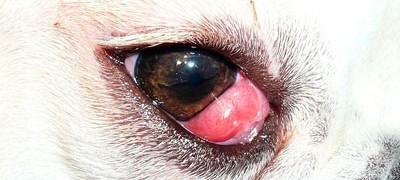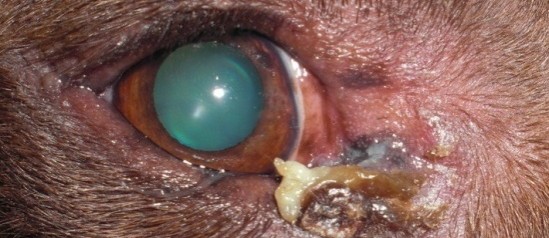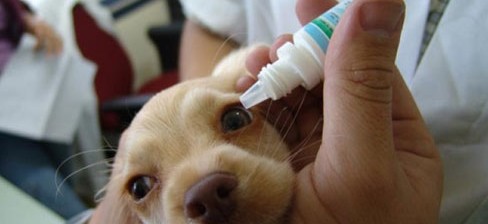How to treat conjunctivitis in a dog
This article will be useful to those who want to know how to treat conjunctivitis in a dog. Vision is one of the most valuable gifts of nature for man. But not only man
Conjunctivitis in dogs
Vision is one of the most valuable gifts of nature for man. But not only man has this gift. Animals also have vision, to which it also brings a lot of benefits both in hunting and in everyday life. A pet, with the help of sight, as well as with the help of smell, distinguishes the owner from other people. An important point for the owner of a pet is to preserve the vision of his four-legged friend.

Causes
Conjunctivitis is an inflammation of the mucous membrane of the eye. The causes of inflammation of the membranes of the eyes can be the following:
- The presence of foreign bodies in the eye, trauma;
- Allergy;
- fungus or viral infections;
- Various problems with the lacrimal glands, eye diseases;
- Contact with the eyes of various chemicals (shampoos, human hygiene products);
- Dust, smoke.
Varieties and symptoms
Depending on the type of conjunctivitis, there are various symptoms of the disease.
Catarrhal conjunctivitis is the mildest. Occurs due to obstruction of the lacrimal canal, due to which the tear does not disinfect the mucous membrane of the eye, the trapped microorganisms begin to multiply. It is characterized by such signs:
- Redness of the mucous membrane of the eye;
- Puffiness of the eyelid;
- The appearance of secretions, first of a liquid consistency, later – they become mucous and thicken.

Purulent conjunctivitis begins when purulent microflora enters the mucous membrane of the eye. Symptoms:
- Discharge from the eyes takes on color;
- The dog smells bad;
- Body temperature rises;
- Dried purulent crusts appear around the eye;
- The dog behaves restlessly, rubs its eyes with its paws or tries to rub them on objects;
- Does not allow a person to touch for a century.
Procrastination by the owner can lead the dog to blindness.

Follicular conjunctivitis, which occurs due to poor-quality treatment or lack of treatment for the above diseases. Small lymph nodes are affected on the inner surface of the eyelid. Sometimes they increase so that the knots twist the eyelid and stick out. Blinking the dog becomes very difficult and painful. A complication may appear in the form of a protrusion of the third eyelid, which will cause more suffering to the pet.

Delay in contacting the veterinarian can lead the dog to lose the eye, as the cornea of the eye will be injured by the swollen nodes.
How to treat conjunctivitis in a dog?
With a mild form of the disease, you need to provide your pet with first aid:
- Rinse your eyes with a solution of potassium permanganate, you can use a solution of boric acid (1/4 tsp. Half a glass of boiled warm water);
- After washing, you can apply eye drops Albucid (2 in each eye);
- Gently remove the pus with a cotton swab soaked in strong brewed tea in the corners and under the eye;
- Drops of almond oil can also be used to remove irritation from the eyes;
- Rinse your eyes with an infusion of mayor (10 grams of grass per glass of boiling water. Insist 3 hours) or a solution of furatsilin.

With the manifestation of severe forms of the disease, it is urgent to lead the dog to the veterinarian. Apply drugs prescribed by the doctor strictly according to the prescription. Domestication will negatively affect the health of the pet.
To preserve the eyes of a four -legged friend, the owner needs to:
- When the dog returned from a walk in the forest, on the street, check the eyes of the pet for the presence of foreign objects, remove them;
- If necessary – rinse your eyes with tea or a decoction of the mayor;
- Allow products containing vitamins A and E into the diet;
- If one of the family members has conjunctivitis, the animal should be isolated from communication with a sick person.
Preventive measures, a timely trip to a specialist at the time of the onset of the disease will allow the pet to keep his pet, and the owner is a good mood and joy for the healthy state of his beloved animal.
